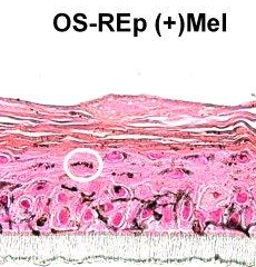A standardized method based on pigmented epidermal models evaluates sensitivity against UV-irradiation
Main Article Content
Abstract
To protect the human skin from extensive solar radiation, melanocytes produce melanin and disperse it via melanosomes to keratinocytes in the basal and suprabasal layers of the human epidermis. Moreover, melanocytes are associated with pathological skin conditions such as vitiligo and psoriasis. Thus, an in vitro skin model that comprises a defined cutaneous pigmentation system is highly relevant in cosmetic, pharmaceutical and medical research. Here, we describe how the epidermal melanin unit can be established in vitro. Primary human melanocytes were introduced into an open source reconstructed epidermis. Following 14 days at the air liquid interface, a differentiated epidermis had formed and the melanocytes were located in the basal layer. The functionality of the epidermal melanin unit could be shown by the transfer of melanin to the surrounding keratinocytes, and a significantly increased melanin content of models stimulated with either UV-radiation or the melanin precursor dihydroxyphenylalanine (DOPA). An UV50 assay was developed to test the protective effect of melanin. In analogy to the IC50 value in risk assessment, the UV50 value facilitates a quantitative investigation of harmful effects of natural UV-radiation to the skin in vitro. Employing this test, we could demonstrate that the melanin content correlates with the resilience against simulated sunlight, which comprises 2.5% UVB and 97.5% UVA. Besides demonstrating the protective effect of melanin in vitro, the assay was used to determine the protective effect of a consumer product in a highly standardized setup.
Article Details
Articles are distributed under the terms of the Creative Commons Attribution 4.0 International license (http://creativecommons.org/licenses/by/4.0/), which permits unrestricted use, distribution and reproduction in any medium, provided the original work is appropriately cited (CC-BY). Copyright on any article in ALTEX is retained by the author(s).


